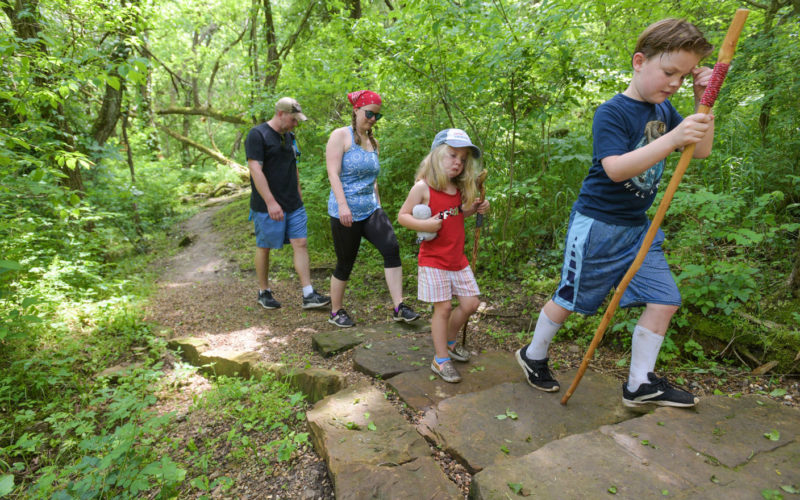Colorful sculptures of grasshoppers, praying mantises and caterpillars are now set against the limestone bluffs in the historic community of Cane Hill.
Down the trails are a number of other site-specific sculptures created by local artists and some University of Arkansas student works, including one human nest — a sort of portal made of twigs and such that’s on a human scale.
It’s all part of a wider exhibition made available through the Smithsonian Institution Traveling Exhibition Services — and it’s the second time Cane Hill has been selected for such an honor.
“Habitat” opened free to the public on April 16 and will run through Nov. 26. Trails and self-guided exhibits are open daily from sunrise to sunset. Historic Cane Hill Visitor Center on Arkansas 45 will be open 10 a.m. to 2 p.m. Thursday through Saturday.
“We’ve had trails here a long time and lovely outdoor spaces, so this is the perfect opportunity to enhance and use them better at a time when outdoor recreation is on the rise,” says Vanessa McKuin, Historic Cane Hill executive director. “People are longing to be outdoors.”
In the exhibit sponsored by Historic Cane Hill Inc., visitors will be able to enjoy the Ozark landscape that includes those limestone bluffs, hiking trails in forested areas, Jordan Creek and a variety of flora and fauna.
“Habitat” has 12 outdoor exhibits and five exhibits in the Visitor Center.
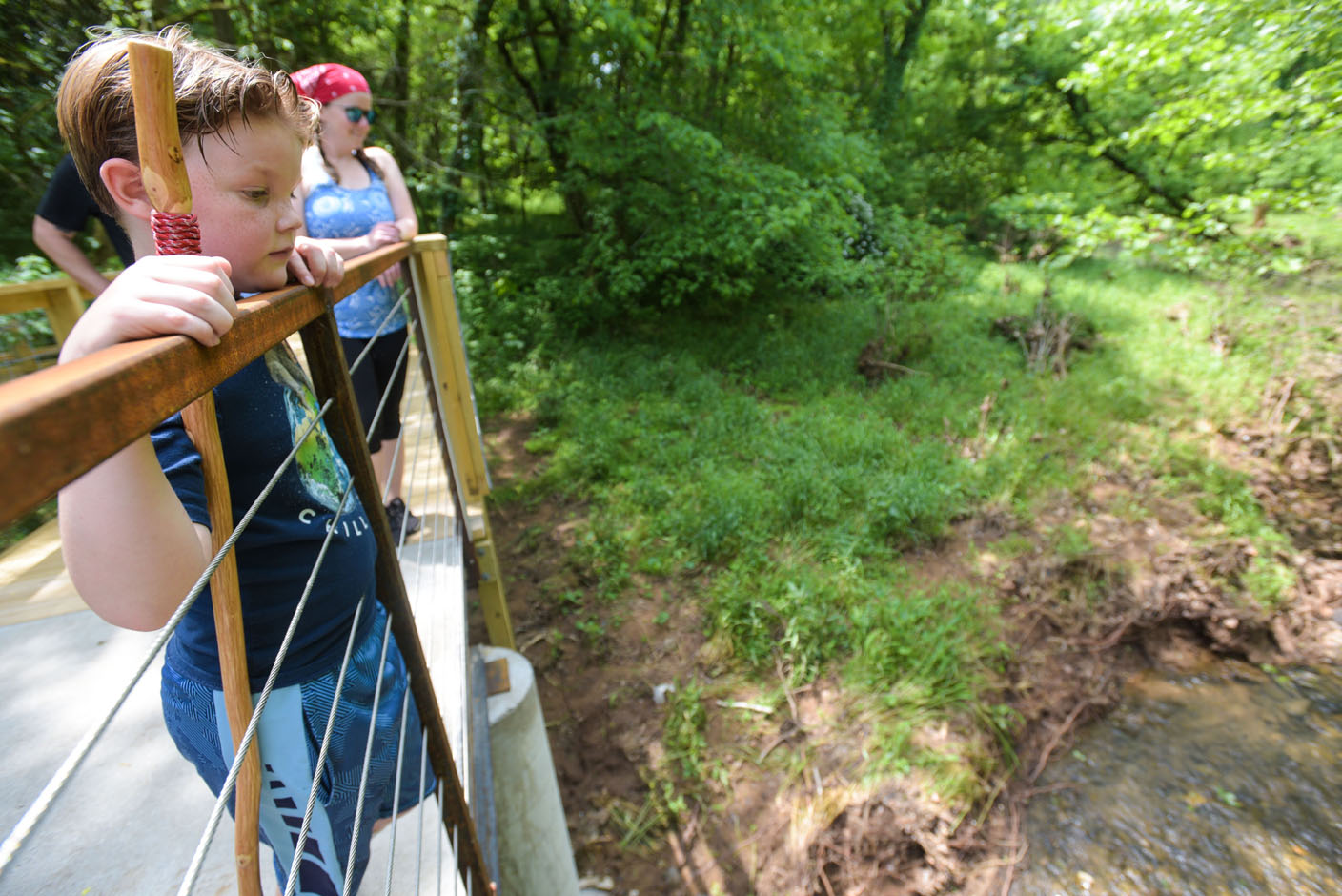
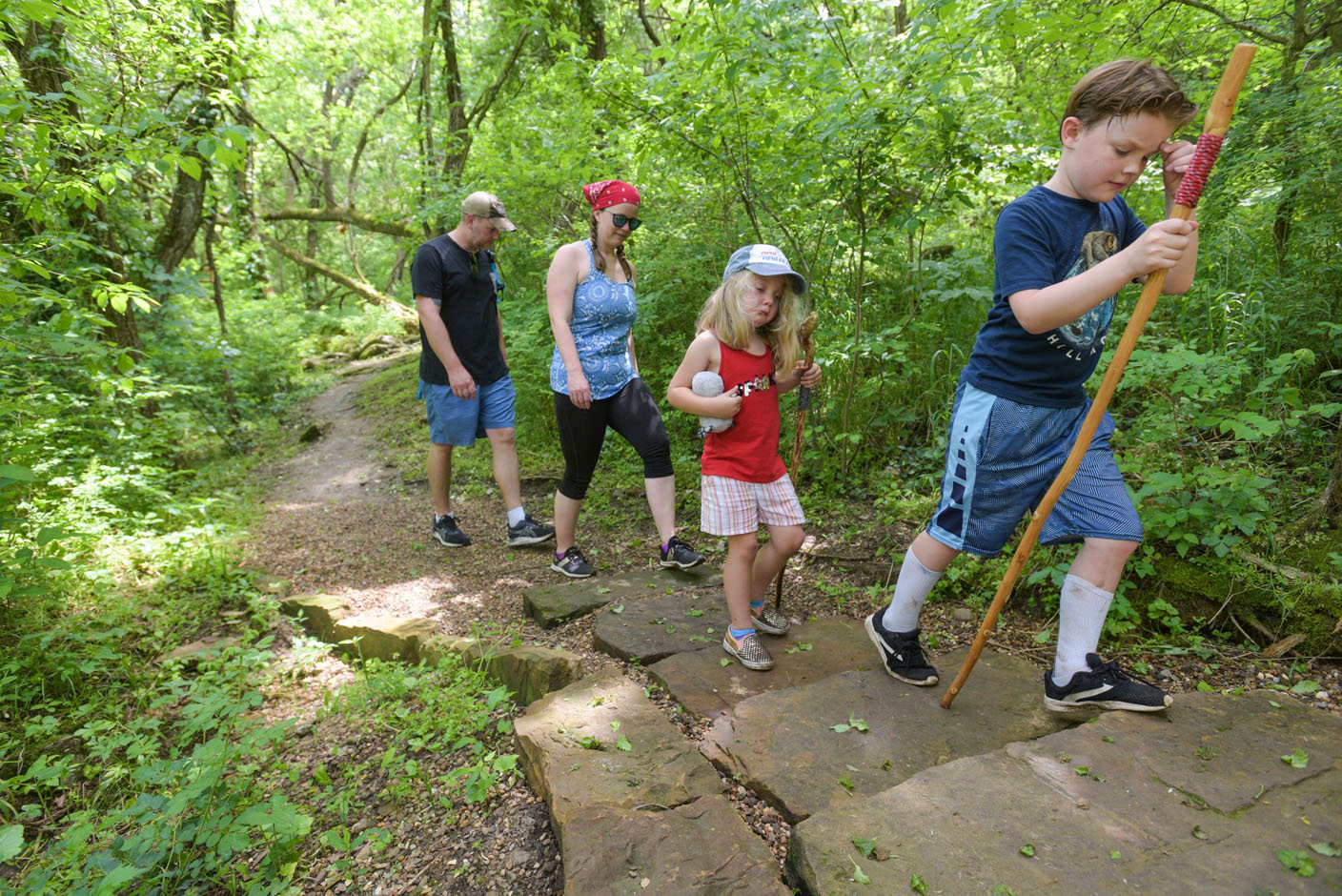
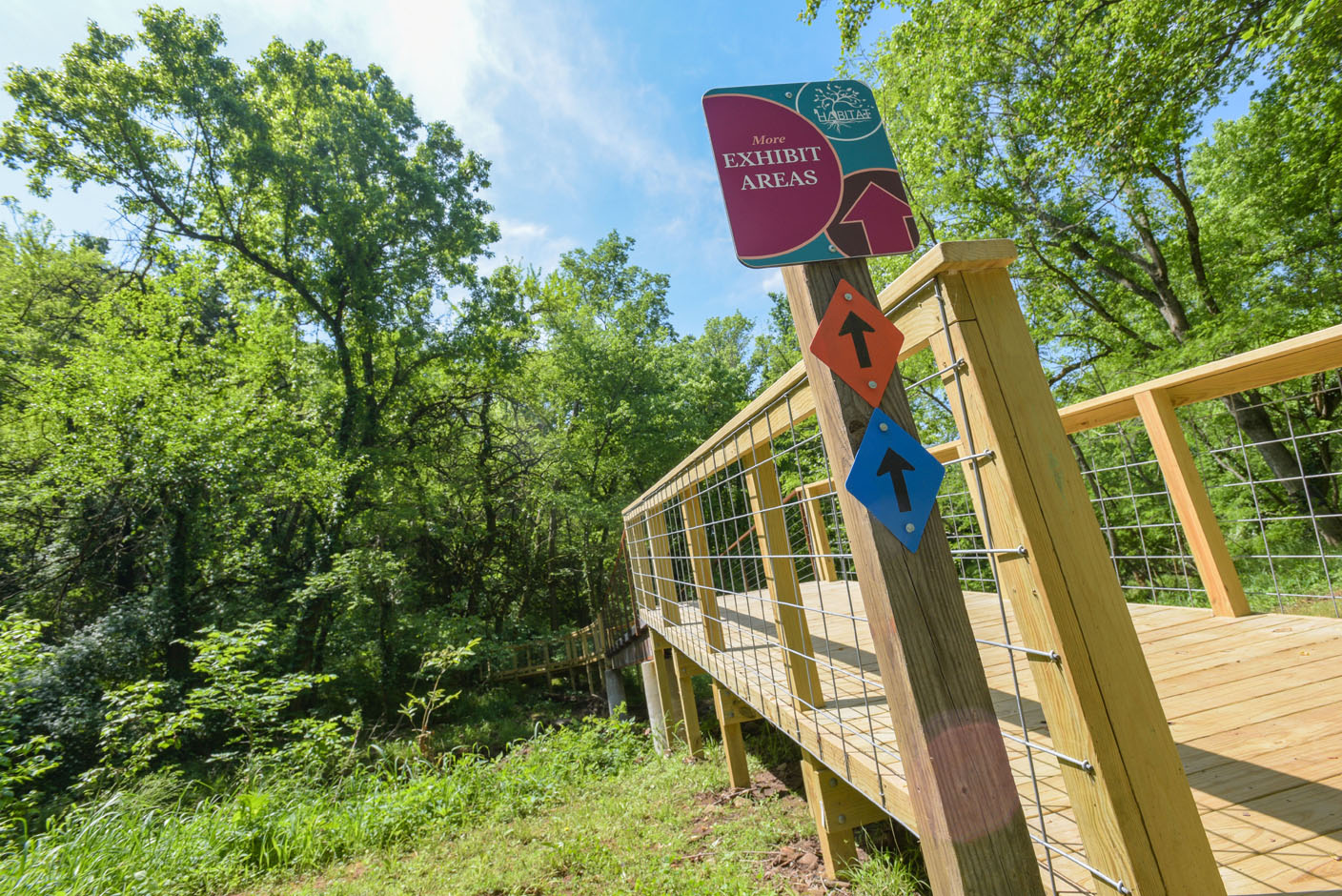


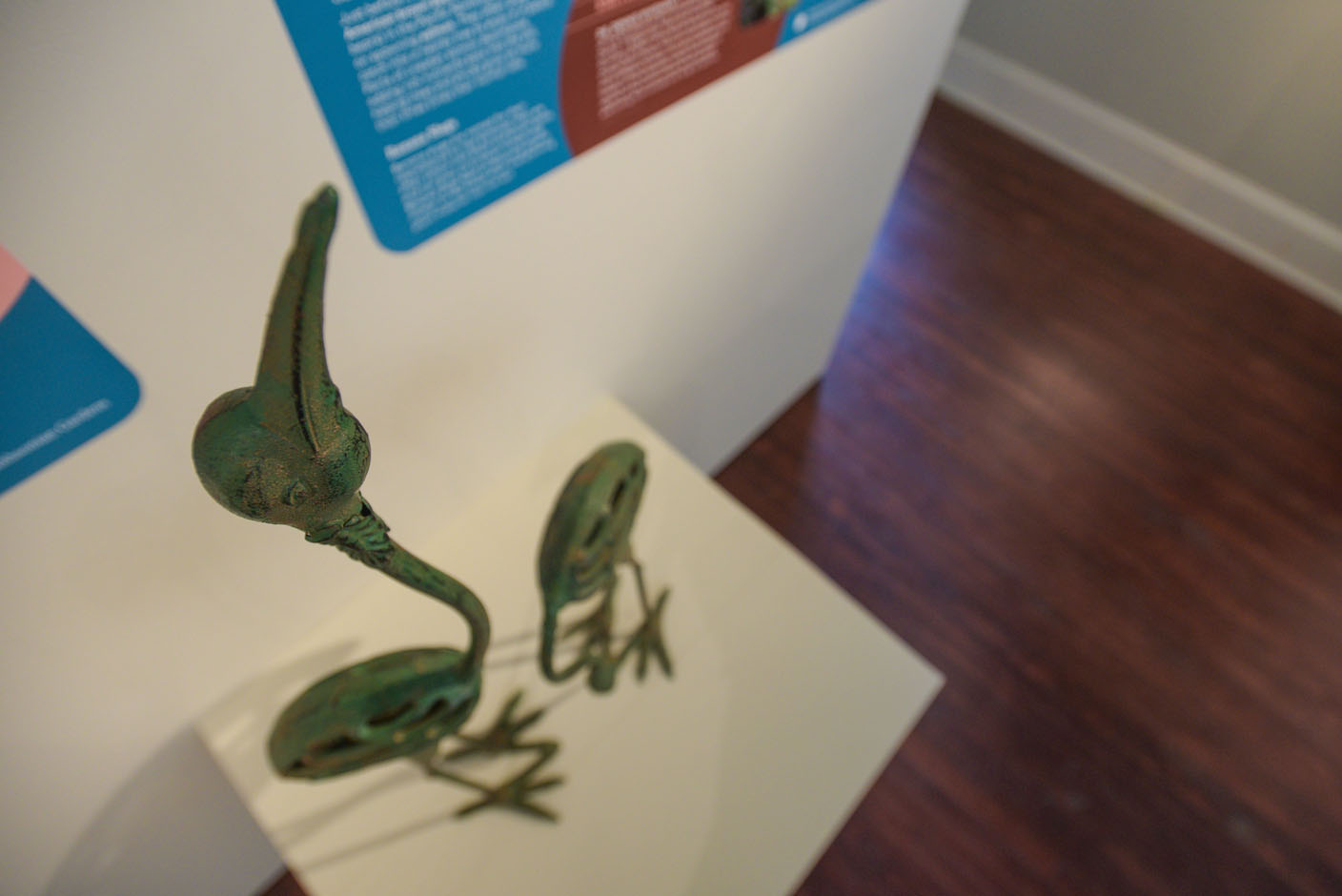
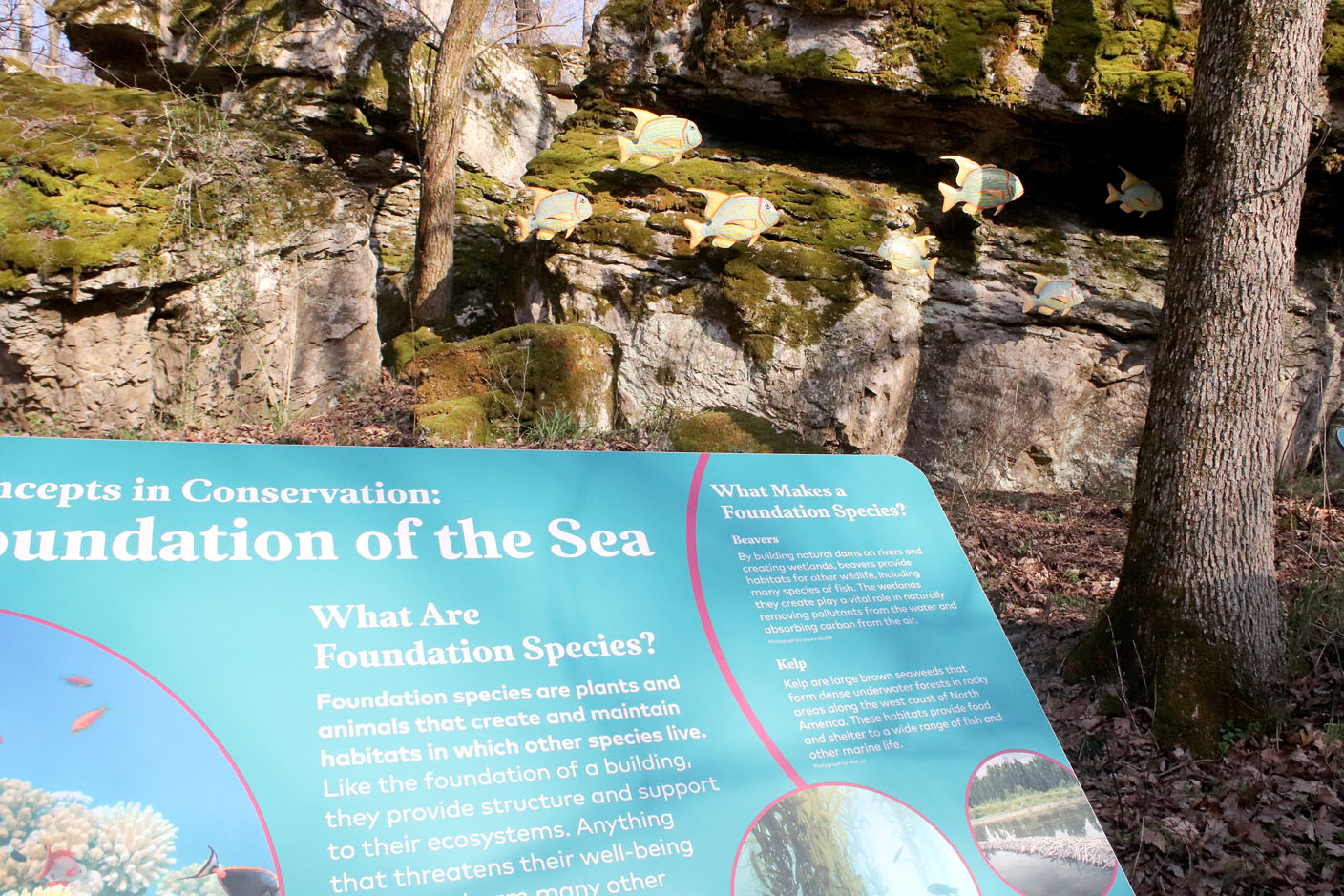
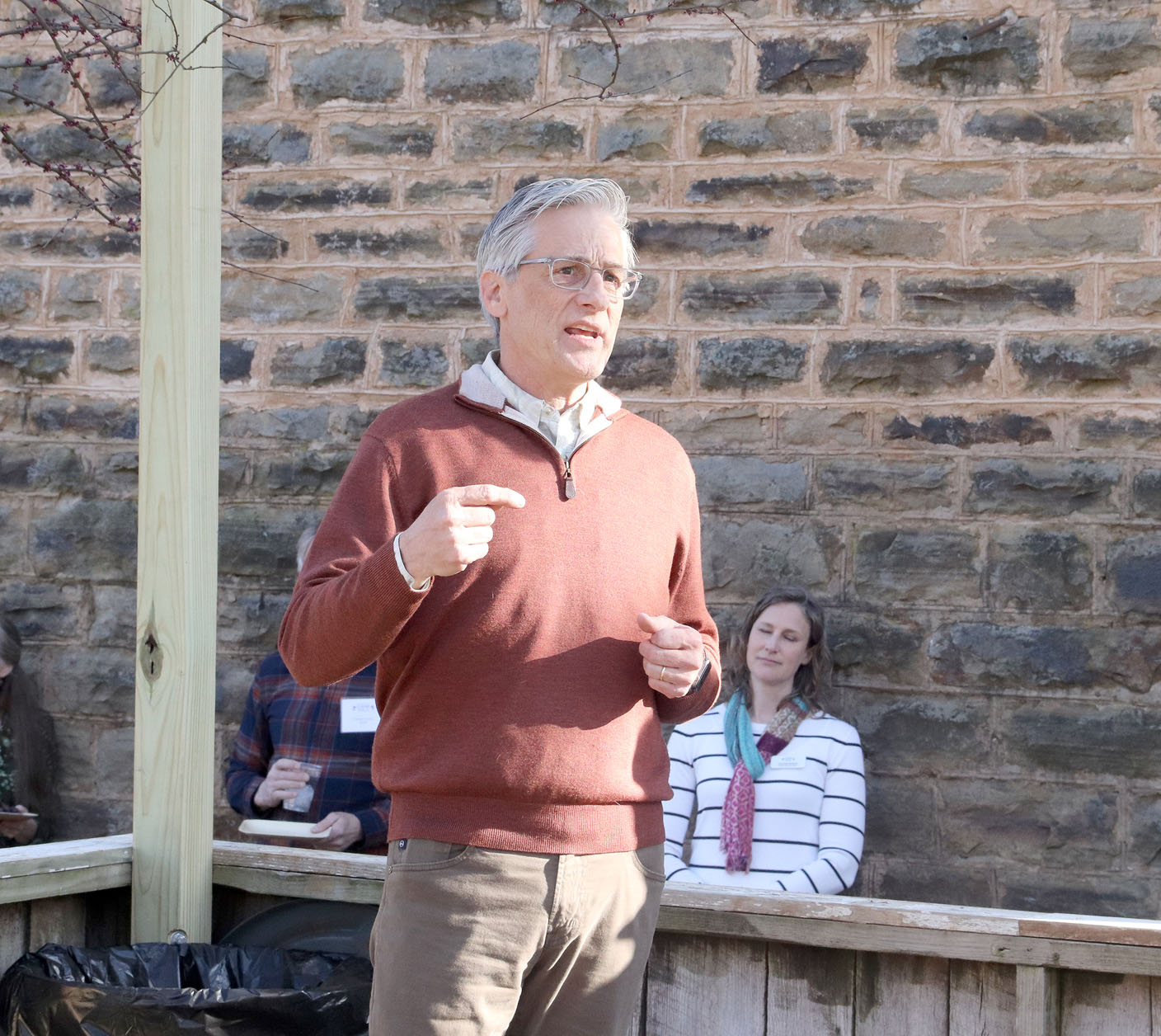
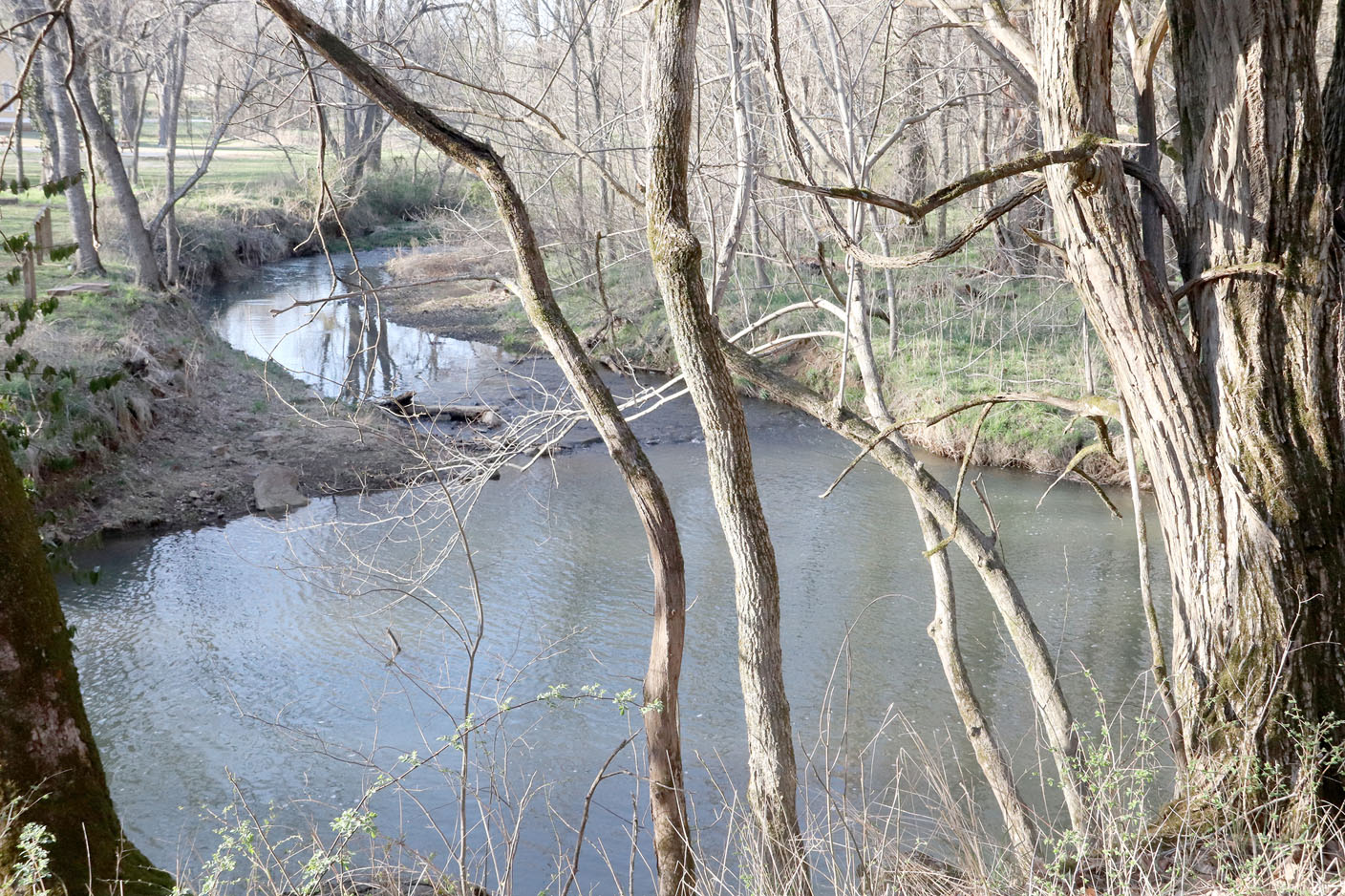

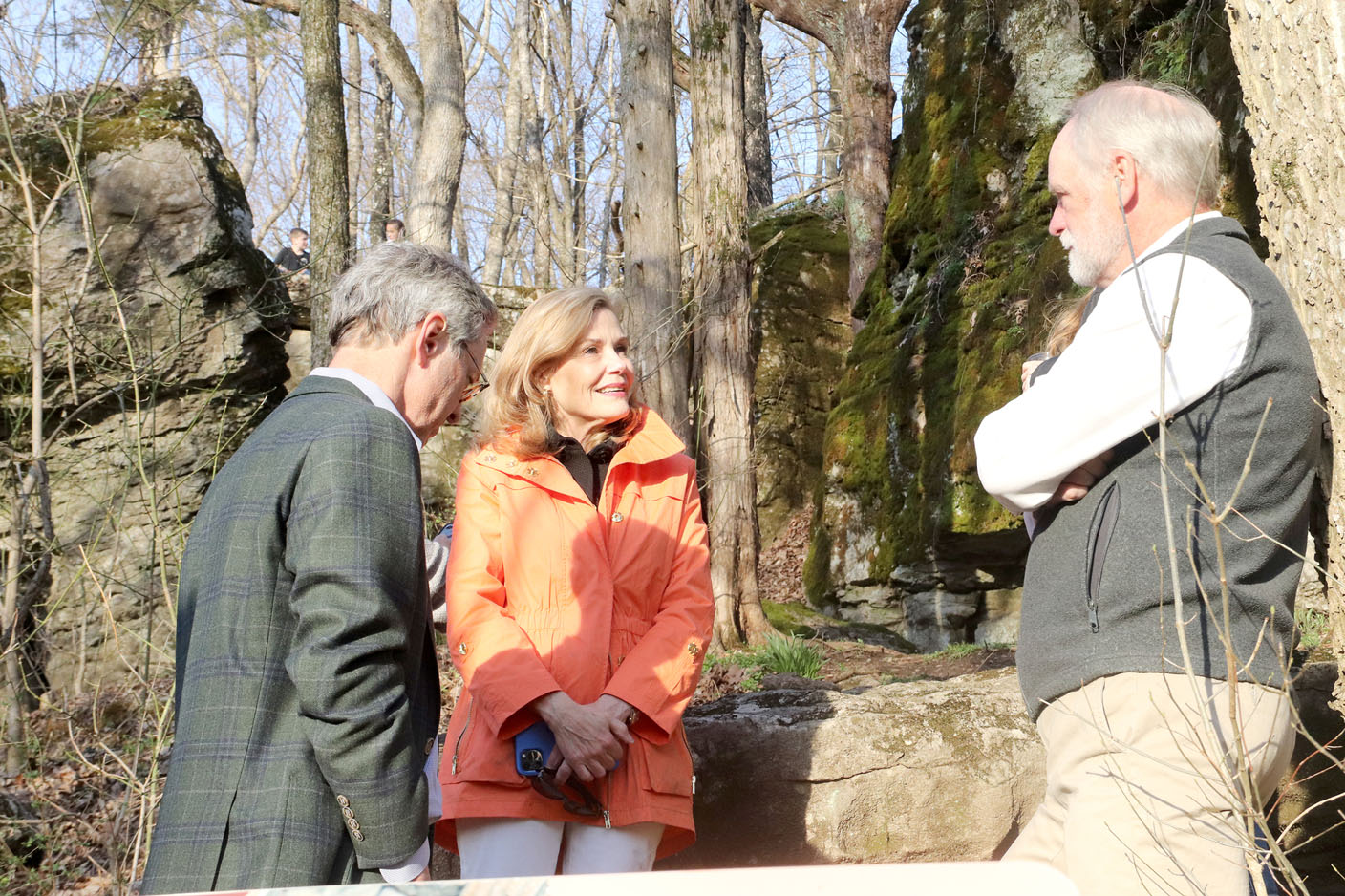
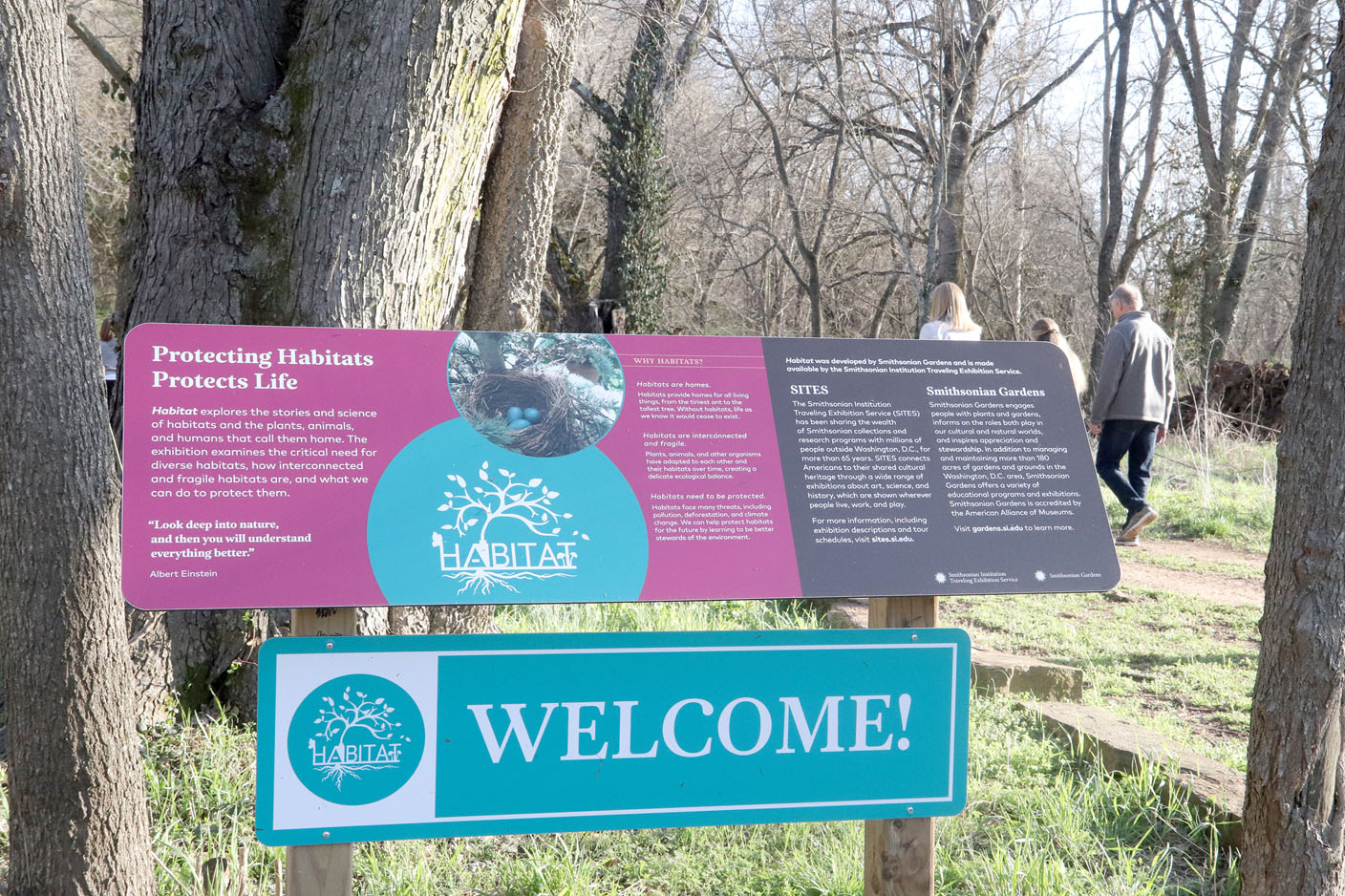
Lawrence McElroy, director of arts and culture, says each exhibit area was carefully chosen, and the centerpiece of all are the interpretive panels — most of which were loaned by the Smithsonian but a couple were made locally.
The new signs are bright colors: aqua/teal and pink/fuchsia. They stand out, but they go well with the natural tones of the greens and browns around them, McKuin says.
Visitors will learn more about topics related to habitats, their importance to life and what people can do to help preserve them. Some of the exhibit areas include information about nests, dead wood, insects, sea life, creeks, compost and butterfly gardens.
Funding from the Arkansas Humanities Council helped ensure information about some of the human habitation areas of Cane Hill would be relayed, such as details about a house on the Historic Cane Hill grounds. A heritage garden was also planted nearby with the kinds of vegetables that would have been grown in the late 19th century.
Of the locally made panels, one focuses on Ozark streams to cover information on Jordan Creek; the other, titled “Fossil Cove,” details the limestone bluffs and their crinoids. It stands near the “Foundation of the Sea” exhibit. Visitors will also see visible proof that the area at one time was covered by a shallow saltwater sea by looking at fossils in stone.
McKuin says new picnic tables and a brand new bridge over Jordan Creek were an important part of making this exhibit work.
Now folks can “better access the trails on the east side of the creek, which used to be a roadblock,” she says. That amounts to 2.5 to 3 miles of new ground, including a couple of different loops that were previously only accessible in low water but can now be traversed year round.
McKuin’s son’s favorite part is the “Habitat of Flight” panel under a box elder tree that has the famously fun “helicopter” seeds that all kids and many adults seem to love to throw in the air so they can watch them spin to the ground.
The accompanying panel talks about flight in other ways: the paths of airplanes and birds, how some birds soar and others move differently.
“That’s been engaging, in my experience, for kids” to have information and a simple, fun activity, McKuin says.
For those who are not able to get out and walk the trails to see the outside exhibits, a video presentation is available at the Visitor Center.
Historic Cane Hill hosted an early reception and preview of “Habitat” on April 1 to recognize sponsors, partners, staff and volunteers who have made the ongoing exhibition possible for the public.
John Greer, president of Historic Cane Hill Board of Directors and a preservation architect with WER Architects/Planners in Little Rock, says his first visit to the community more than nine years ago was a “life-changing event.” Since then, Greer and WER Architects have been intimately involved in numerous projects for Historic Cane Hill, including the cornerstone project to completely restore Cane Hill College.
Greer points to Jerry Leach and his son, Tim Leach, as the ones who started the process to purchase and bring back many of the buildings in the community.
They were concerned, Greer says, that if something was not done, all the historic buildings would disappear with time.
Greer introduced staff and volunteers with Historic Cane Hill that have been involved in creating and developing “Habitat.” The Smithsonian provided the interpretative signs for the exhibition, but staff and volunteers are the ones that brought each exhibit area to life.
“You guys are the energy,” Greer told them. “You are the boots on the ground making this happen and bringing this exhibition to fruition.”
McKuin noted the reception was her first in-person event as executive director. Most of the buildings at Historic Cane Hill have been closed to the public because of the covid-19 pandemic.
“This exhibition celebrates the outdoors and the diversity of habitats in this environment,” McKuin says. “This is the connection between the natural habitat and the history of Cane Hill.”
McKuin says she hopes “Habitat” will delight people, make them happy and inspire them to get outside.
McElroy is described as the “brains” behind the exhibition, but McElroy was quick to give credit to everyone involved.
“This project is a team effort,” McElroy says. “It could not have been done without staff and volunteers.”
McElroy says he approached the executive board about a year and a half ago with the “crazy idea” of bringing “Habitat” to Cane Hill, and they agreed. Information for the exhibition comes from an array of researchers and scientists.
“We are the beneficiaries of this expertise,” McElroy says, noting that at the core of the exhibition is an educational experience.
The focus of “Habitat” is that protecting habitats protects life, McElroy says. The backbone of the exhibition is a series of 40 graphic panels that are set out along Historic Cane Hill’s three-mile trails system or in other parts of the Cane Hill community.
McElroy admits the exhibition begs the question, “Why Cane Hill?”
For him, the decision to bring “Habitat” to Historic Cane Hill was a deliberate one. When he learned that “Habitat” would be offered as a traveling exhibition by the Smithsonian, he applied for the opportunity because he saw it as the “perfect marriage” with Historic Cane Hill’s goals to provide arts and culture, quality of life and historical preservation.
“I see this as our coming-out party,” McElroy says. “We’re finally ready to announce ourselves to the public.”
Along with the “Habitat” exhibition, Historic Cane Hill will schedule different programs throughout the spring and summer to complement the exhibits, according to David Collins, public programs manager for Historic Cane Hill. These programs will include writing workshops, insect collecting, stream snorkeling and archaeology.
Collins says the staff hopes families will come out to enjoy the activities and engage in learning together.
Historic Cane Hill’s first Smithsonian traveling exhibition was “The City of Hope” about the 1968 Poor People’s Campaign in Washington, D.C. The exhibit was set up in The Museum Gallery at Historic Cane Hill in early 2020 but then had to close because of covid-19 concerns.
__
FYI
‘Habitat’
“Habitat” opened free to the public April 16 and will run through Nov. 26. Trails and self-guided exhibits are open daily from sunrise to sunset. Historic Cane Hill Visitor Center on Arkansas 45 will be open 10 a.m. to 2 p.m. Thursday through Saturday. For more information, visit historiccanehillar.org.

